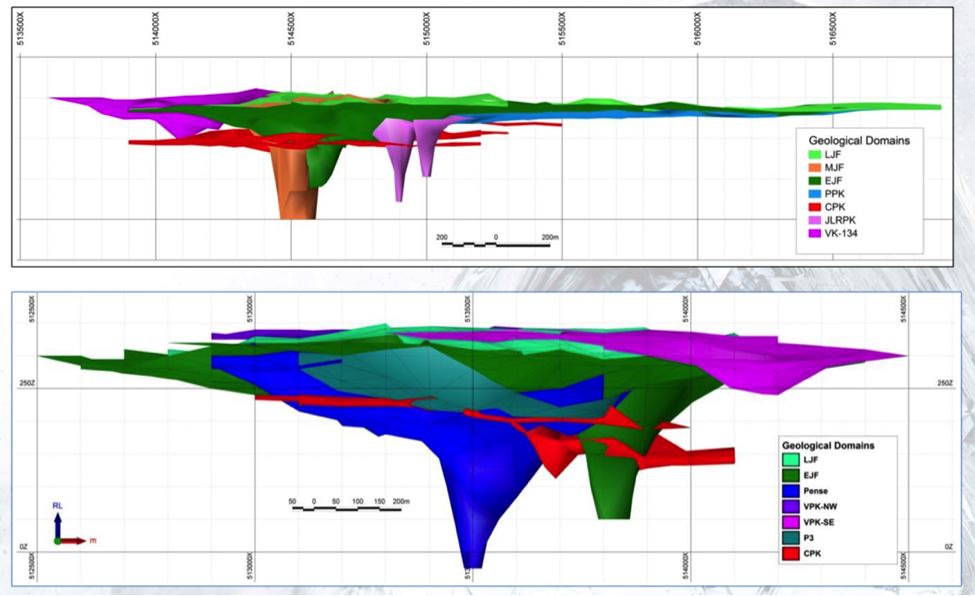
General Geology
The Star-Orion South Diamond Project lies near the northeastern edge of the Phanerozoic Interior Platform, which extends from the Rocky Mountains in the west, to the Precambrian Canadian Shield in the northeast. The Interior Platform sediments exceed 600 m in thickness. The unmetamorphosed sedimentary rocks of the Interior Platform unconformably overlie metamorphosed basement rocks. These Proterozoic basement rocks have been interpreted to form part of the Glennie Domain which has been tectonically emplaced overlying the Archean Sask Craton. In the Star and Orion South area, the Precambrian is estimated to be at a depth of 730 m.
Kimberlite Geology
Based on surface and underground core drilling and underground mapping data, the Star and Orion South Kimberlite deposits contain two distinct types of kimberlite: 1) eruptive kimberlite phases; and, 2) kimberlitic sedimentary rocks.
The eruptive kimberlites of the Star Kimberlite are sub-divided into five main phases: Cantuar Pyroclastic Kimberlite (“CPK”), Pense Pyroclastic Kimberlite (“PPK”), Early Joli Fou Kimberlite (“EJF”), Mid Joli Fou Kimberlite (“MJF”) and Late Joli Fou Kimberlite (“LJF”). The eruptive kimberlites of the Orion South Kimberlite are sub-divided into Six main phases: Cantuar Kimberlite (“CPK”), Early Pense Kimberlite (“P3”), Pense Kimberlite (“Pense”), EJF, LJF and Viking Pyroclastic Kimberlite (“VPK”).
Each phase has distinct physical and chemical properties that enable their mapping and stratigraphic correlation in three dimensions within each kimberlite. It is important to note, however, that two stratigraphically equivalent kimberlite packages (e.g. Pense Kimberlite on Star and Orion South) do not share a genetic relationship and each has unique diamond grade and carat value characteristics. Some of the stratigraphically equivalent kimberlite units (e.g. EJF on Star and Orion South) do, however, have similarities in mineral constituents, mantle signatures, chemistry and diamond distribution that suggest a genetic relationship.
The Star Kimberlite deposit is dominated by crater facies rocks formed from a central vent, which include both well-defined pyroclastic flows and fall deposits that radiate away from the crater. The sheet-like, inter-sedimentary Cantuar and Pense kimberlites are kimberlites deposited from pyroclastic flows. The EJF is a combination of vent filling pyroclastics and pyroclastic flows away from the crater. The MJF and LJF are dominated by crater facies vent filling pyroclastic kimberlite deposits with lesser thin pyroclastic fall accumulation radiating away from the crater.
Within the Orion South Kimberlite, the phases have cross-cutting relationships near conduits, but are stacked vertically within the volcanic edifice and crater / extra-crater deposits. Several conduits, feeding different units, have been identified on Orion South.

Star Kimberlite and Orion South Kimberlite Geological Models by Star Diamond Corporation